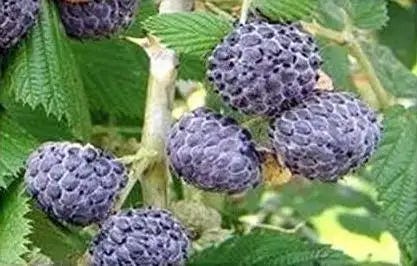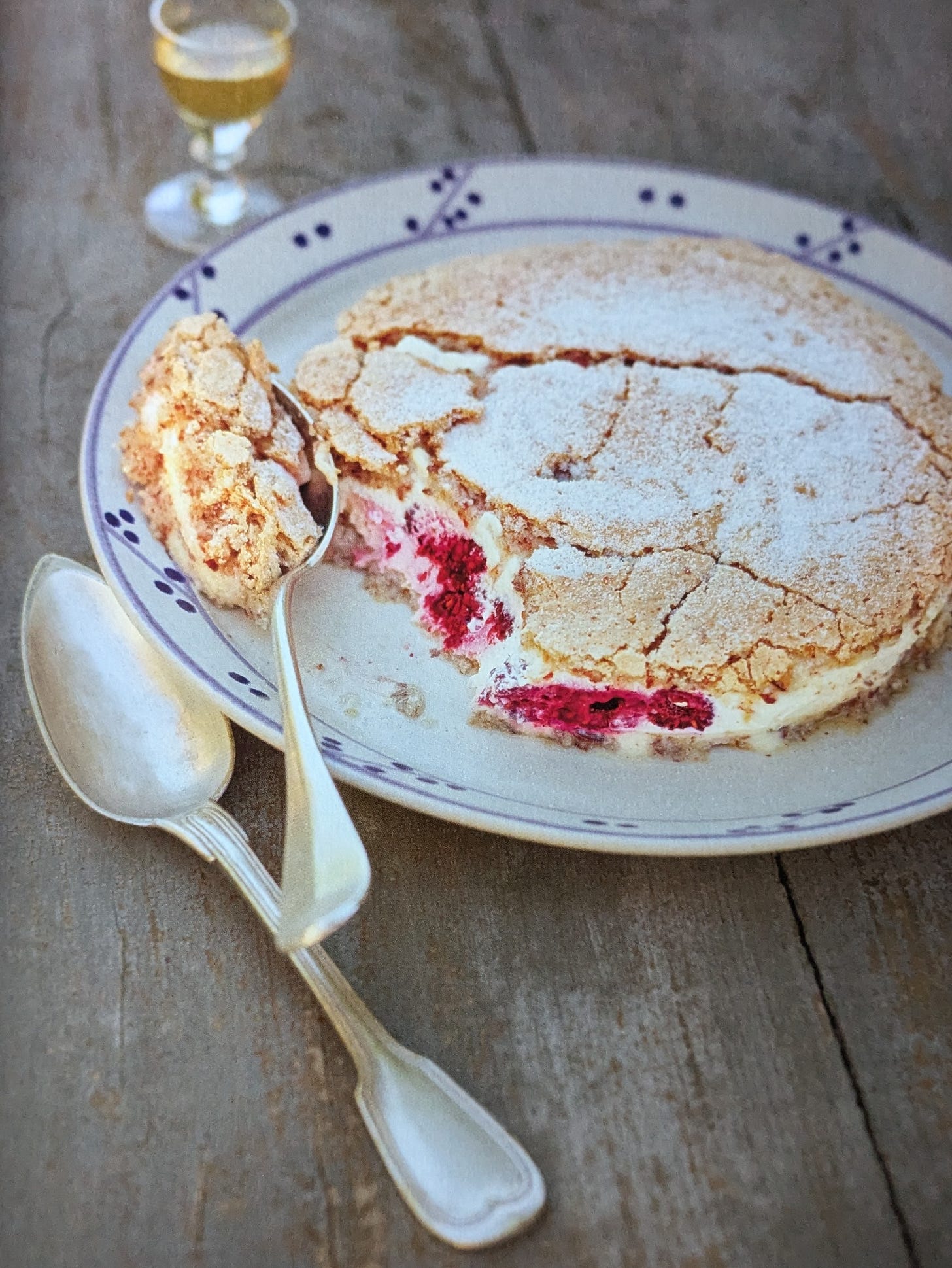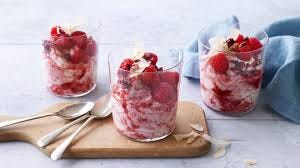Grasp the rasp, the better berry
Recipes for Raspberry Fool and Raspberry and Hazelnut Meringue Cake

In the days in the UK before fruit picking became the province of seasonal agricultural workers, most of whom before Brexit would come over from Eastern Europe, there was one commercial fruit that was picked by children. The raspberry.
In 1982, the influential English food writer and cookbook author Jane Grigson wrote of their young heads bobbing up and down on the 7947¼ acres of raspberry canes of Perth in the Carse of Gowrie and of Angus. A fertile stretch of land along the north shore of the Firth of Tay between Perth and Dundee in Scotland, it was source of the UK’s best, and the supplier back then of 90 percent of all the raspberries consumed in Britain. School holidays were timed to release the children for the picking.
Even these days, while some raspberries come from Mexico and Spain, in particular out-of-season berries, and in the UK from Herefordshire and some eastern English counties, the area round Blairgowrie in Scotland’s Strathmore Valley, is still the major UK provider. Globally, however, the majority of the crop is supplied by Russia, at 23 percent of the total production of 940,979 tonnes. Time for a berry embargo?
I love strawberries. But I’ve discovered when asking anyone tucking into those that, just like me, they prefer raspberries. My father nurtured many raspberries canes bending and waving inside a large netted cage to protect them against greedy birds. On summer weekend and holiday mornings, my sister and I were dispatched into them to pick bowls of raspberries for supper before being allowed to escape all day on our bicycles to who knew where - certainly our mother had neither idea nor concern.
Not being a user of chemicals - gardeners weren’t back then, there were often wriggly grey commas in the bottom of a good many of the berries. My father claimed they would be stunned senseless by the sugar crystals we scattered over our berries, or drowned in the floods of cream, or pulped when we crushed the berries with the tines of our forks, providing us with extra protein. So stop making a fuss and tuck in.
Just like our Palaeolithic ancestors would have done, except it was wild raspberries they tucked into. The Romans were the first to be credited with cultivating them, once they arrived on their turf via the Greeks. Then onwards raspberries dispersed with the Romans, to the Netherlands and the British Isles, and later with the pilgrims to North America.
‘Blue raspberry’ is a flavour only. It does not exist as a fruit, although Rubus leocodermis, the black cap raspberry native to North America which produces purple fruits, grows along the western coast of the US, from Alaska down to California and south to Chihuahua in Mexico, with inroads on the way into Montana, New Mexico, Arizona, Utah and Nevada.
Synthetic ‘blue raspberry’ flavour first appeared in the US in 1958 as a syrup on snow cones. Its taste profile is part pineapple, part banana, part cherry. After the FDA banned Red Dye No.2 in 1976, FD&C Blue No.1 came into play, to differentiate ‘raspberry-flavoured’ foods from strawberry-, watermelon- and cherry-flavoured foods, all of which were red.
My father always called raspberries ‘rasps’ which seemed as idiosyncratic to us as was his ‘goosegogs’ for gooseberries. But he was simply following history. Raspberries were originally known, from around 1534, as ‘rasps’. The name derived from raspis, a mid-15th century sweet rose-coloured wine which itself was called after the Anglo-Latin vinum raspeys. It wasn’t until around 1602 that ‘berry’ was added and the full name ‘raspberry’ recorded. Even today, in Scotland and the north of England - and in the Scottish household of my father - the berries are still known simply, always in the plural, as rasps, a descriptive first recorded in print in Scotland in 1555.
Hazelnut and raspberry meringue cake is one of the most glamorous and delicious you can produce, the recipe here.
It’s easily made. But so much simpler is this Raspberry Fool, which dates back to 1675 when it appeared in Hannah Wolley’s Accomplisht Lady’s Delight.
Serves 6-8
500g/1lb raspberries
2 tablespoons icing/confectioners’ sugar
1-2 tablespoons granulated sugar according to taste
250ml/8 fl oz whipping cream
125-150ml/4-5 fl oz double/heavy cream
1 or more tablespoons distilled rose-water
Crush 3 tablespoons of the raspberries with a fork then rub them through a sieve into a bowl to eliminate most of the seeds. Sprinkle up to 2 tablespoons of the granulated sugar to the remaining berries.
Add one of the 2 tablespoons of icing sugar to the raspberry puree in the bowl. In a separate bowl, whip the two creams together until fluffy. Fold in the raspberries and any leaked juice followed very gently by a tablespoon of rose water. Taste and add more until you get an elusive and complementary flavour. Divide between 4 or 8 bowls (or just one big one) and drop the remaining raspberries decoratively on top.
Cover and refrigerate until ready to eat, taking it out at the start of your meal to ‘breathe’. It’s good with a thin vanilla cookie.





my father also called them goosegogs!
Your father sounds like a treasure! No wonder you love words! Was your sister as influenced by this word+history bug? Had no idea Scotland was a raspberry kingdom! Raspberries are hard to come by here. If you grow them you keep them close! We do have a local farm family that grows fields of strawberries,